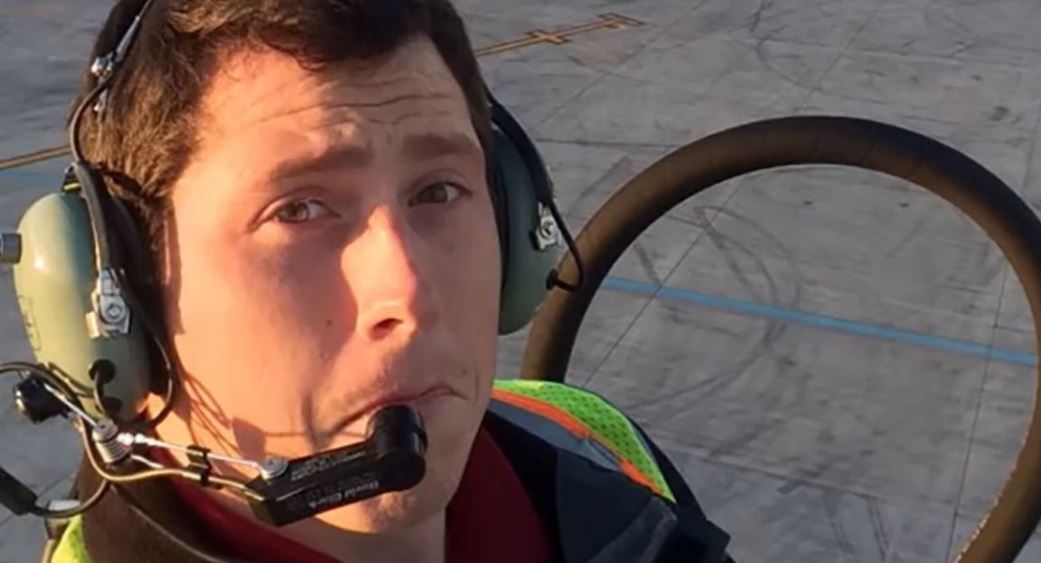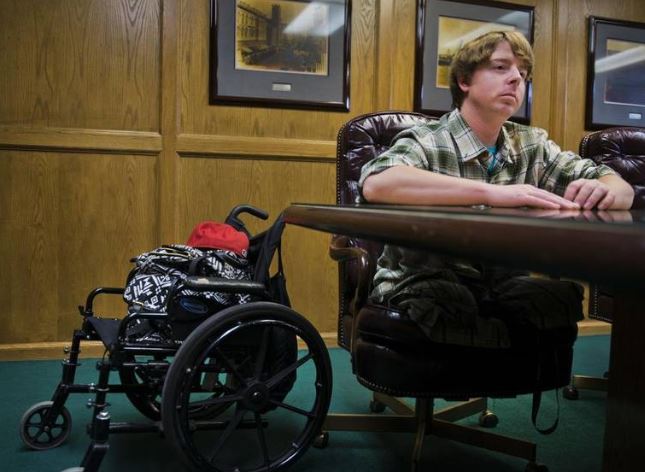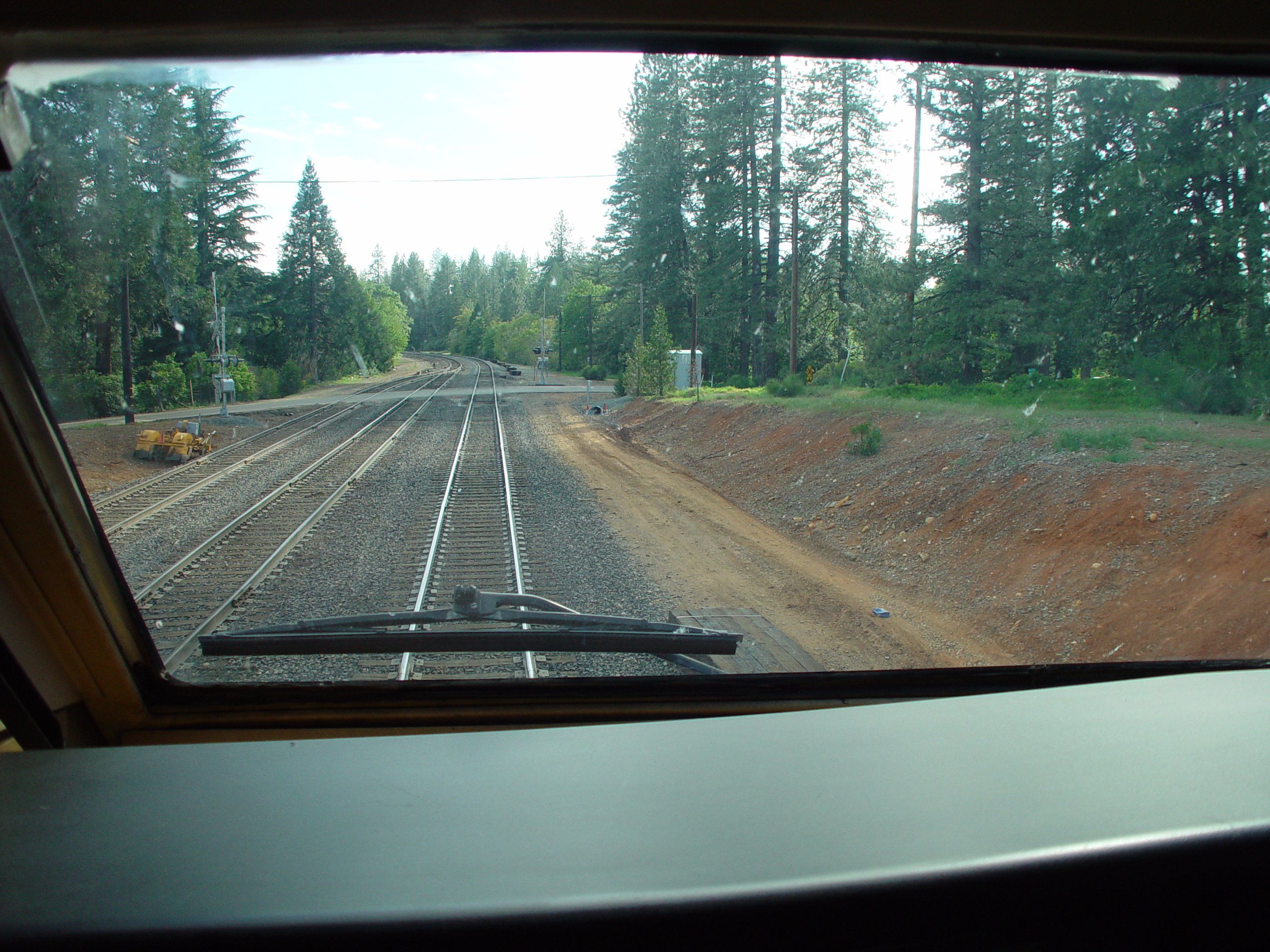 And I say: calm down. This was a one-off event. It isn’t the end of the world and everyone doesn’t have to clamp down with more needless security.
And I say: calm down. This was a one-off event. It isn’t the end of the world and everyone doesn’t have to clamp down with more needless security.
All this does is prove one thing about humanity: you never know what people are thinking and you never will. “Security” won’t be able to touch that. Some things just happen and there is no predicting them.
“But BZ, think of the children. We must do something. We must over-react as usual.”
I submit: no we don’t. Let’s take a breath and consider a few things. First, the story from CNBC.com:
‘Incredible maneuvers’ by airline ground agent who stole plane baffles employer. His only training appears to be ‘video games.’
by Leslie Josephs
- Airline executives say they are not sure whether Richard Russell, who stole a Q400 twin-engine turboprop from Seattle-Tacoma International Airport, had formal flight training.
- The NTSB is reviewing the cockpit voice recorder and flight data recorder.
Shortly after he stole an airplane from his employer, Horizon Air ground service agent Richard Russell barreled down a runway, took off and flew the two-engine turboprop above the Puget Sound, flying in dramatic loops before crashing in a wooded area of a nearby island.
Russell died in Friday night’s crash.
Airline executives said they aren’t sure whether the 29-year-old, who was hired by the Alaska Air Group‘s regional arm Horizon Air in February 2015, had formal flight training.
Russell didn’t appear to have a pilot’s license, Horizon Air CEO Gary Beck said in news conference over the weekend. The grounds crew worker told air traffic control agents that he played some video games.
“There were some maneuvers that were done that were incredible maneuvers,” Beck said. “I don’t know how he achieved the experience that he did.”
What did he do? Let’s look at the video from John Waldron.
The Bombardier Q400 double-engine turboprop aircraft goes for about $27 million dollars. It requires some training and familiarity the likes of which Richard Russell apparently possessed to a degree — at least in terms of being able to lift the plane off the runway. But it’s a whole new ballgame to land such a thing. It needs 4,600 feet to take off, and 4,200 feet to land. It gets almost one nautical mile per gallon.
Wired.com wrote:
Getting the plane moving would be a bigger challenge. Starting one is not a question of jimmying the right locks or shorting the right wires—the mechanisms are much more complicated, even if there’s no ignition key. Pilots have to sit down with a manual and study to get it done. “For a generic employee to even know how to start the engines, that’s a task in and of itself,” says Moss.
Getting it in the air should have been very difficult, too. The employee had to know exactly how to retract the steps and landing gear, the route to taxi toward the runway, and how to take off, all without clearance. And he had to do it quickly—experts say the air traffic control would have immediately noted an unauthorized airplane taxiing in the airport, and would have alerted the police and fire department, who might have been able to throw up barriers to prevent the takeoff.
“Barriers to prevent the takeoff”? Not on your life. Such magic thingies don’t exist and, even if they did, there isn’t some highly-paid and skilled individual available, 24/7, with his hand on the Emergency Barrier Module.
Aviation experts who watched the remarkable footage of the airplane gliding over the Seattle-Tacoma area say that one thing is for sure: This unauthorized pilot must have had some flying experience.
But here’s the confounding and yet, simultaneously, comforting part:
Footage shows the plane performing loops and maybe even a barrel roll before crashing into a remote Washington State island, maneuvers that would have been difficult to pull off—particularly in the Q400 Bombardier turboprop, an airplane Moss describes as “not acrobatic.”
Meaning: you can’t just “steal the keys” off some board, stroll out to a Q400, insert the keys and start it up. “D” for drive just won’t cut it.
In air traffic control chatter preserved online, the man can be heard saying he didn’t need much help controlling the plane because he had “played some video games before.” But controllers had to talk him through some of the airplane’s controls, an indication he wasn’t familiar with the Q400’s particular control mechanisms.
How did the man learn to do all this? It’s possible, Moss notes, that he was a mechanic trained to do engine runs. Or it’s possible he learned how to fly on his own time.
Here is audio and some video from the event. The controllers were sterling.
The media had hissy fits. “How could this happen?”
The incident at Seattle-Tacoma International Airport has exposed blind spots in aviation security and safety, and challenges in screening employees and addressing potential mental health problems. The National Transportation Safety Board is reviewing the cockpit voice recorder and flight data recorder from the wreckage, which will provide more insight into what happened.
Russell was part of a team of ground service workers whose duties included loading and unloading baggage, tidying planes and towing. He used a tractor to move the 76-seat Q400 turboprop plane 180 degrees before taxiing to the runway, when an air traffic controller repeatedly asked him to identify himself.
“Blind spots in aviation.” Right. Like not being able to read minds. The man already possessed the requisite security clearances to be where he was and do the job he performed. He didn’t just walk into the job. He was backgrounded. He had to be vetted and he was cleared.
Do you think he was enthused with aviation? I bet he was. Do you think he paid attention to what was happening around him? I bet he did. Do you think he spoke to pilots of all makes and stripes? I bet he did. He was paying attention. Was he a fan of aviation? Again, I bet he was. Did people like him? I bet they did. Maybe this: maybe he wanted to be a pilot one day. Maybe that’s why he took his job.
A Q400 captain from another airline, who spoke on the condition of anonymity, said the maneuvers were “impressive” and said that even starting the plane’s engines is complex: a process that includes a series of commands and getting one wrong would stop the engines from starting up.
Richard Russell was paying attention.
Some skills he could have gotten on the job from watching others, while flight simulator software may have helped him familiarize himself with how the plane works. Tutorials are also available online.
“It’s not a top secret process,” said Jeff Price, an aviation consultant and former ramp worker. “You can watch other folks. It’s not that hard to gather up a lot of this information.”
You want to start up a Q400? Watch the video.
The family of Richard Russell said, essentially, that they didn’t see this coming. How could they? Who inhabited his mind except him? Haven’t you ever gone from happy to Debbie Downer in the course of a few seconds? We all have. The brain is a cryptic, sloppy and puzzling place. Even for its personal inhabitants.
 The bottom line is this: cool your jets. This is a one-off event that will not become a flood simply because of the knowledge required and the security access required. No, we don’t need ignitions requiring keys in aircraft and no, we don’t need thirty-five additional layers of security. We just need to remember that, even in ideal circumstances, there will always be fly shit in pepper.
The bottom line is this: cool your jets. This is a one-off event that will not become a flood simply because of the knowledge required and the security access required. No, we don’t need ignitions requiring keys in aircraft and no, we don’t need thirty-five additional layers of security. We just need to remember that, even in ideal circumstances, there will always be fly shit in pepper.
You try to pick it out.
BZ



 Therefore Amtrak needs to pay pay pay.
Therefore Amtrak needs to pay pay pay.
 You can see the static view of an Amtrak cab whilst stopped in Dutch Flat. Now imagine this times 25 mph. Now imagine this at night. What is it that you could truly observe? Can you see the crossing ahead in the dark? Can you see something dark obstructing the tracks? Easily seen here. What about at night, at speed?
You can see the static view of an Amtrak cab whilst stopped in Dutch Flat. Now imagine this times 25 mph. Now imagine this at night. What is it that you could truly observe? Can you see the crossing ahead in the dark? Can you see something dark obstructing the tracks? Easily seen here. What about at night, at speed?